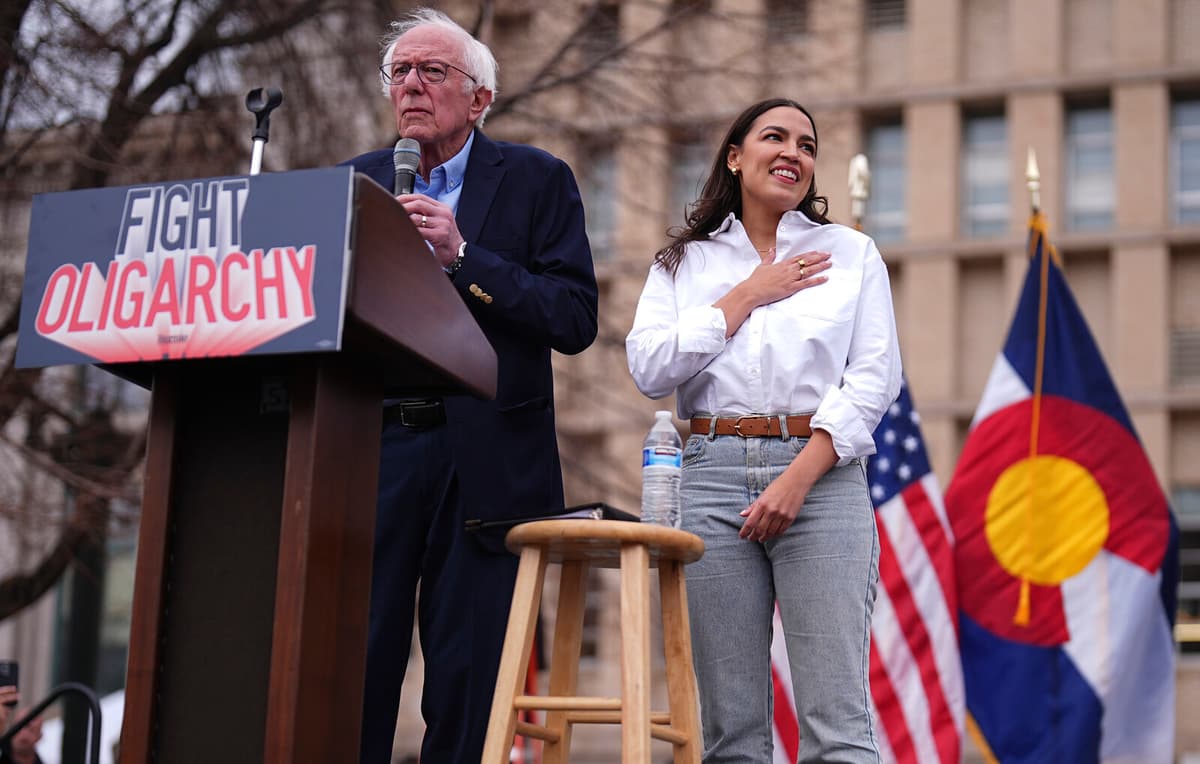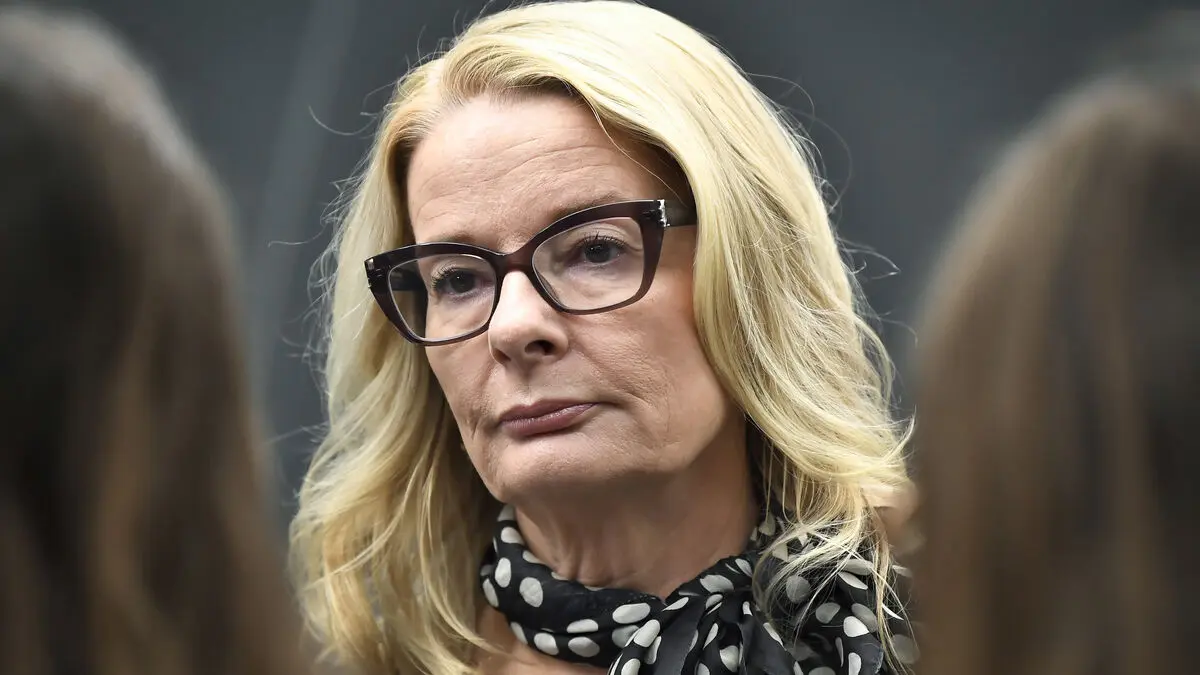In spite of the gloomy spring weather, tens of thousands had gathered in the park in central Denver. Serious-looking people in windbreakers and fleece stood pressed against the barricades, some had climbed up onto a statue. Then New York Democrat Alexandria Ocasio-Cortez stepped out onto the stage.
The 35-year-old congresswoman, who has been pointed out as a future star, quickly began talking about economic equality and the importance of "fighting against oligarchy". But she also had something else to say:
We are not powerless in this moment!
It doesn't matter who you voted for, what race, religion or identity you have... If you are willing to stand up for someone you don't know, you are welcome here (in the movement).
Soon a chant of "AOC!" rose from the supporters in the park. And afterwards, the enthusiasm was great, to judge by AP's reporting.
We lack leadership, we really need someone to step forward and show us what to do, said small business owner Kristen Hanson to the news agency.
Alexandria Ocasio-Cortez was not the main speaker in Denver. She was there to present the self-proclaimed democratic socialist and Vermont Senator Bernie Sanders. It is Sanders who is behind the campaign "Fight Oligarchy" – which some see as directed against tech billionaires like Elon Musk, who is close to Trump. The Senator had asked Ocasio-Cortez to travel with him in Arizona, Nevada and Colorado.
Despite neither the 83-year-old Sanders nor Ocasio-Cortez herself mentioning it, the tour is described in the media as a generational shift within the USA's progressive movement. Sanders repeatedly calls AOC "an inspiration for millions of young people".
Too Early?
The question is whether he is pointing to the right person? The Democrats are indeed in great need of charismatic, young leaders, as they are wing-clipped after last autumn's loss to Donald Trump and the Republicans in Congress. But the progressive faction that AOC represents is only one group – and it stands far to the left.
To win elections in the USA, it usually requires a more centrist politician. In recent weeks, names like Representative Jasmine Crockett and Michigan Senator Elissa Slotkin have circulated as good examples of unifying leaders and "Trump opponents". A number of governors – such as Chris Murphy from Connecticut, Josh Shapiro from Pennsylvania and JB Pritzker from Illinois – are also being discussed.
Both Grant Reeher, professor of political science at Syracuse University in New York, and Cassandra Engeman, researcher and outgoing chair of Democrats Abroad in Sweden, emphasize that it is far too early to appoint a new leader or speculate about the next presidential candidate. First, an intensive and challenging grassroots effort in cities and states must have its course.
The party must figure out what the best opposition strategy is and what the message should be. Now they're just doing the same thing they've been doing since 2017, namely pointing out the problems with Trump's rule, says Reeher.
Cassandra Engeman emphasizes the importance of a restart.
In Congress, we don't have the votes needed (to stop Trump's policy). To start over, we must focus locally. When we deliver in city and county councils, we build trust and create engagement among voters. That's where change happens, says Engeman, who is from Missouri and has lived in Sweden since 2016.
Local Activism
It is in line with the debate article that Ben Rhodes, deputy security adviser in Barack Obama's administration, recently wrote in The New York Times. There, he described the Democrats as a paralyzed party that many have lost faith in. The solution, according to Rhodes, is to build local grassroots movements around single issues that affect the USA's large working- and middle-class. He mentions resistance to corruption, Trump's cuts to Medicare and Medicaid, and freedom of speech as possible issues to ignite passion.
Grant Reeher thinks he sees two potential Democratic future themes, one about inclusion and justice and one about economy. The latter should be a given message for the party, he believes.
But if I were a strategist, I would urge them to drop the oligarchy rhetoric and instead focus on the real challenges facing the middle and working class – and admit that the party hasn't listened to them for many years.
TT: How would you have used the Signal Leak that revealed Trump's attack plans on Yemen?
I would have emphasized the lack of competence. That the cabinet doesn't function effectively and smartly, and that it has consequences.
A question driven by Democrats abroad is the one about hollowed-out voting rights. Trump has signed a decree that makes it more difficult for Americans abroad to vote, as they must scan their passport and prove that they have lived in a certain state.
We must be able to vote, it's our way of holding those in power accountable, says Engeman.
Silent and Furious
Exactly what message should be driven and who will take on the leadership role will not crystallize until at least November, when some state elections are held. Clarity is likely to have been created by the next congressional election in November 2026, when the Democrats hope to retake the Senate and the House of Representatives, predicts Reeher.
However, taking it slow and building from the ground up can be frustrating in a time where Trump's antics are pouring in and those who currently lead the party do not seem to be trying to act. Chuck Schumer, the party's leader in the Senate, has been met with demands for resignation after letting through the White House budget.
My friends are all from stunned to furious. But I feel hope when I see how many want to engage. The phone has been hot since Trump became president, says Engeman.
Tina Magnergård Bjers/TT
Facts: The Democrats in the USA
Formally founded: 1828
Symbol: Donkey
Current leader: The chairman of the governing body Democratic National Committee (DNC) is Minnesota politician Ken Martin. Minority leader in the Senate is Chuck Schumer and in the House of Representatives Hakeem Jeffries. Both group leaders come from New York.
The Democrats have historically been strong among craftsmen and workers in cities, farmers in the west and south, as well as ethnic minorities. They also have a large support among liberal academics. Currently, the party has the most supporters in the populous states along the USA's west and east coasts.
Compared to the Republicans, the Democrats have greater faith in the state to create welfare and build systems for education, healthcare, and infrastructure.
Democratic presidents since 1950:
Harry S Truman 1945–53
John F Kennedy 1961–63
Lyndon B Johnson 1963–69
Jimmy Carter 1977–81
Bill Clinton 1993–2001
Barack Obama 2009–2017
Joe Biden 2021–2025





